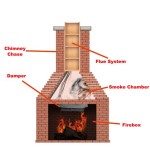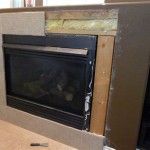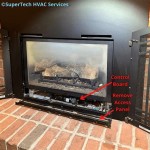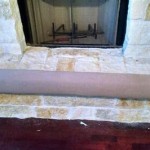Wood Mantel Fireplace Surround: Enhancing Home Ambiance and Value
A wood mantel fireplace surround stands as a prominent architectural feature within a home, serving both aesthetic and functional purposes. It frames the firebox, transforming a simple heating source into a focal point that elevates the interior design. The choice of wood, style, and finish significantly impacts the overall character of the room, contributing to a sense of warmth, elegance, or rustic charm. Beyond its visual appeal, a well-constructed wood mantel can also increase a home's value and provide a practical surface for displaying decorative items.
The selection of a wood mantel fireplace surround requires careful consideration of several factors. These include the existing architectural style of the home, the size and proportions of the fireplace, and the desired aesthetic. Different types of wood, each possessing unique grain patterns and characteristics, offer varying visual effects. Furthermore, the finish applied significantly influences the mantel's color, texture, and durability.
Wood Species and Their Characteristics
The type of wood used in a mantel fireplace surround plays a crucial role in its appearance and durability. Hardwoods, such as oak, maple, and cherry, are known for their strength, density, and resistance to wear and tear. Oak, with its distinctive grain pattern, offers a classic and versatile look suitable for a wide range of styles. Maple, characterized by its smooth, fine grain, provides a more contemporary and understated aesthetic. Cherry, prized for its rich color and aging process, lends an air of elegance and sophistication. These hardwoods, due to their density, tend to be more resistant to scratches and dents, making them ideal for high-traffic areas or homes with children and pets.
Softwoods, such as pine and fir, represent more budget-friendly options. While not as durable as hardwoods, they are generally easier to work with and offer a lighter, more rustic appeal. Pine, with its characteristic knots and warm tones, is often used in country-style or farmhouse-inspired interiors. Fir, known for its straight grain and uniform texture, provides a clean and simple look. Softwoods are generally more susceptible to scratches and dents compared to hardwoods, requiring more careful maintenance and protection.
The choice between hardwood and softwood often depends on the homeowner's budget, style preference, and anticipated usage of the fireplace. While hardwoods represent a more significant initial investment, their longevity and resistance to damage can make them a worthwhile choice in the long run. Softwoods, on the other hand, offer a more affordable way to add a wood mantel to a fireplace, particularly in less frequently used rooms or where a more rustic aesthetic is desired.
Styles and Design Considerations
Wood mantel fireplace surrounds come in a variety of styles, each reflecting different design trends and architectural periods. Traditional mantels often feature intricate carvings, ornate moldings, and classical detailing, drawing inspiration from historical styles such as Victorian, Georgian, and Federal. These mantels often incorporate elements like fluted columns, dentil moldings, and elaborate corbels, creating a sense of grandeur and formality. They are well-suited for homes with a classic or traditional architectural style.
Contemporary mantels, in contrast, tend to embrace clean lines, minimalist designs, and a focus on functionality. They often feature simple, geometric shapes and a lack of ornamentation, creating a sleek and modern aesthetic. These mantels may incorporate metal accents or other modern materials, reflecting a more contemporary sensibility. They are best suited for homes with a modern or minimalist architectural style.
Rustic mantels often showcase the natural beauty of the wood, emphasizing its grain patterns, knots, and imperfections. They may feature rough-hewn beams, reclaimed wood, or distressed finishes, creating a warm and inviting atmosphere. Rustic mantels are well-suited for homes with a farmhouse, cabin, or country-style aesthetic.
When selecting a mantel style, it is important to consider the overall architectural style of the home and the desired ambiance. The mantel should complement the existing decor and contribute to a cohesive and harmonious design. The size and proportions of the fireplace also play a role in determining the appropriate mantel style. A large fireplace may benefit from a more substantial and ornate mantel, while a smaller fireplace may be better suited for a simpler and more understated design.
Installation and Maintenance
Proper installation of a wood mantel fireplace surround is crucial for both safety and aesthetic reasons. It is essential to ensure that the mantel is securely attached to the wall and that it meets all applicable building codes and fire safety regulations. The installation process typically involves attaching the mantel to the wall using screws, brackets, or other appropriate hardware. The type of wall construction (e.g., drywall, brick, stone) will influence the specific installation techniques required.
It is important to maintain proper clearances between the mantel and the firebox to prevent overheating and potential fire hazards. Consult the manufacturer's instructions and local building codes for specific clearance requirements. In general, a minimum clearance of 12 inches is recommended for combustible materials above the firebox opening. For mantels made of non-combustible materials, a smaller clearance may be permissible.
Regular maintenance is necessary to keep a wood mantel fireplace surround looking its best. Dusting the mantel regularly with a soft cloth will help prevent the accumulation of dirt and grime. Periodic cleaning with a mild soap and water solution can remove stubborn stains or spills. Avoid using harsh chemicals or abrasive cleaners, as these can damage the finish. Depending on the type of finish, it may be necessary to apply a protective coating, such as wax or polish, to maintain its luster and prevent drying or cracking.
Wood mantels are susceptible to damage from moisture. Avoid exposing the mantel to excessive humidity or water. If spills occur, wipe them up immediately to prevent staining or warping. Consider using a dehumidifier in the room during periods of high humidity.

Mantels Direct Rustic Ridge 48 X 41 Wood Mantel Fireplace Surround

Modern Ember 76 Inches W X 57 H Black Maple Traditional Fireplace Surround In The Surrounds Pilasters Department At Com

New Fireplace Mantel 8 By 12 And 62 Long Solid Wood Pine Hand Hewn Customizable

Modern Ember Lenwood 48 Inch Wood Fireplace Mantel Surround Kit Unfinished

Sabine Wood Fireplace Mantel

Wooden Mantel Fireplace Surround Hand Hewn Rough Barn Beam Rustic Wood

Modern Ember Larimore Electric Fireplace Mantel Package In White

Arden Wood Fireplace Mantel Mantels Direct

Barnwood Fireplace Mantel

Hand Hewn Fireplace Mantel 8x8
Related Posts








